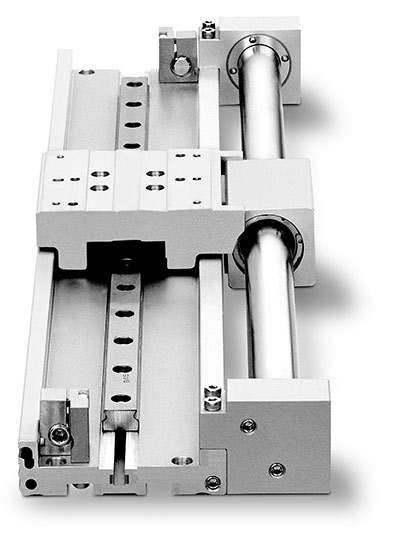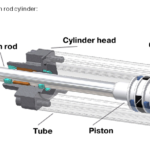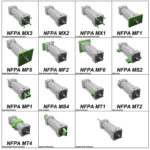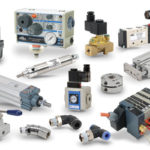Contributed by Vicki Burt
In a rodless air cylinder — also called a rodless slide — motion is transmitted through the body length by an internal piston moving with the cylinder, driven by compressed air. The piston is attached to a shuttle or carriage, which supports the load and moves it in a linear direction with the piston.

Image courtesy of SMC USA
Rodless slides work well in applications with limited space, because when they are installed, the length is only slightly longer than the cylinder’s stroke. This means, for example, a 25 mm diameter rodless cylinder with a 1,000 mm stroke would take up 1,200 mm of space, opened or closed.
Other reasons for choosing rodless cylinders include:
- Reliable, repetitive linear movement
- Support high loads and moment forces
- Clean operation with minimal chance of lubrication contamination
- Higher speeds than conventional cylinders
- Loads can be moved over large distances in faster times
- No concerns about rod buckling
- Smaller footprint for long stroke applications compared to typical rod-type cylinders
- Minimal component maintenance reduces downtime
In general, rodless cylinders have the same basic components: a cylinder tube or barrel, a piston, inner and outer sealing bands, and end-cushioning end caps. A slide table assembly, also called a shuttle or carriage, is mounted directly above the piston, connected directly through a slot cut along the top of the cylinder body, indirectly through magnets located on both the piston and table, or by cables connected to the piston through a pulley.
Compressed air from the end caps moves the piston and carriage along the length of the cylinder barrel in either direction. The sealing bands prevent external leakage of air pressure and allow the carriage to move back and forth. Adjustable end cushioning on both ends prevents any hard stops at the end caps.
When choosing a rodless cylinder, it’s critical to consider how the load affects function, and to account for unwanted bending moments. Pitch, roll, and yaw moments are possible as well as the “jerking” forces from acceleration and deceleration of the carriage. Cylinders that are mounted vertically also need to consider the forces of gravity when moving and holding the load in place.
However, these factors are straightforward to design for, and the ability to support higher loads and moment forces are an advantage over conventional rod-type cylinders. With conventional cylinders, the rod extends beyond the cylinder barrel to push or pull the load. This creates the tendency to bend and buckle, creating excess wear on the seals and bearing. The weight of the cylinder rod can also sag under its own weight, causing misalignment and more bending and buckling. Rod-type cylinders travel at different velocities in forward and return strokes and are designed for short stroke lengths.
The most common applications for rodless cylinders are packaging, printing, automotive, cutting, material transfer, assembly, robotics, and electronics manufacturing. And they’re used across industries such as textiles and ceramics, testing and inspection, food and beverage production, and pharmaceuticals and chemicals to name a few.






Leave a Reply